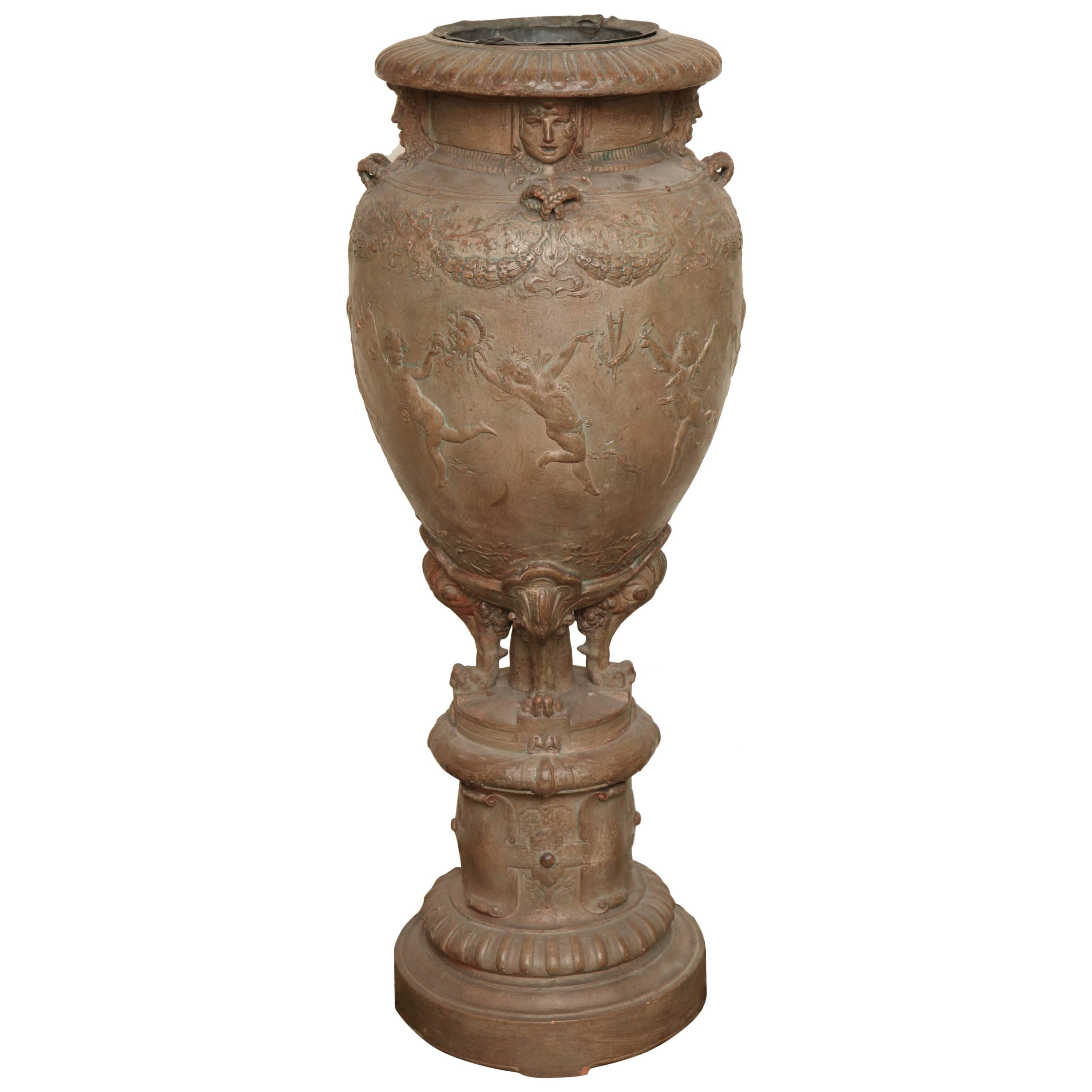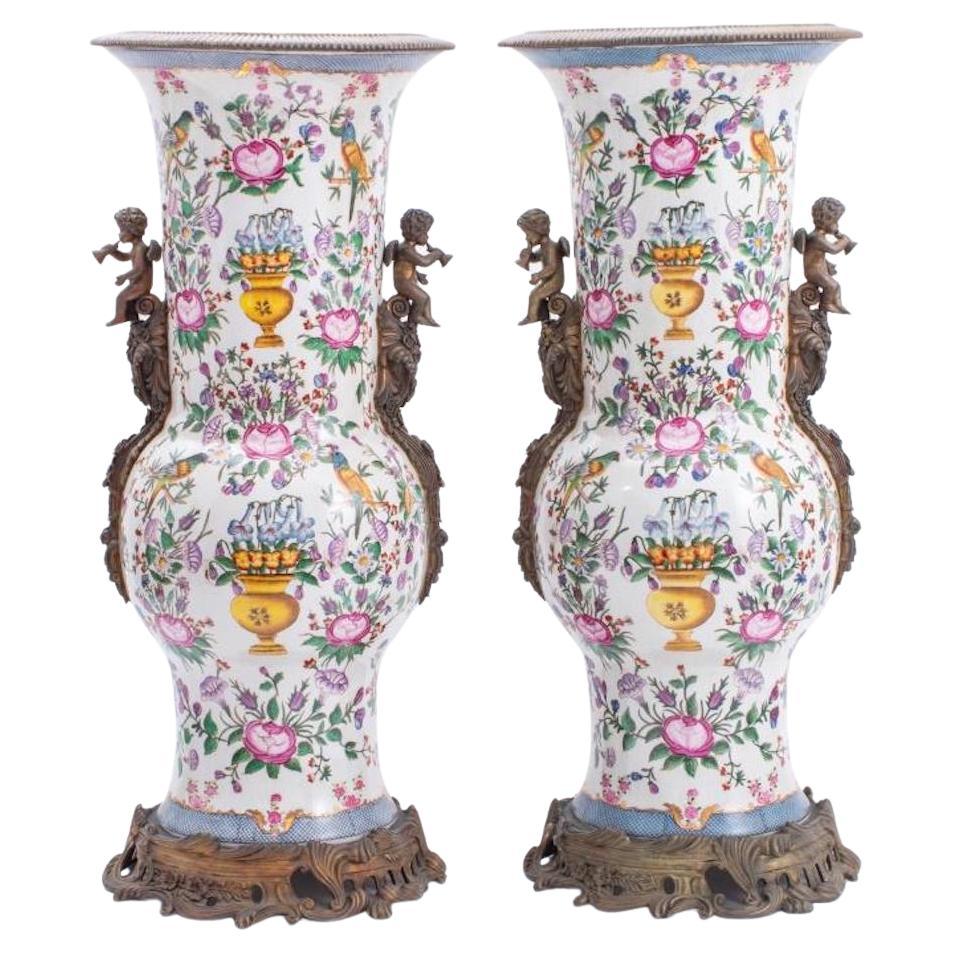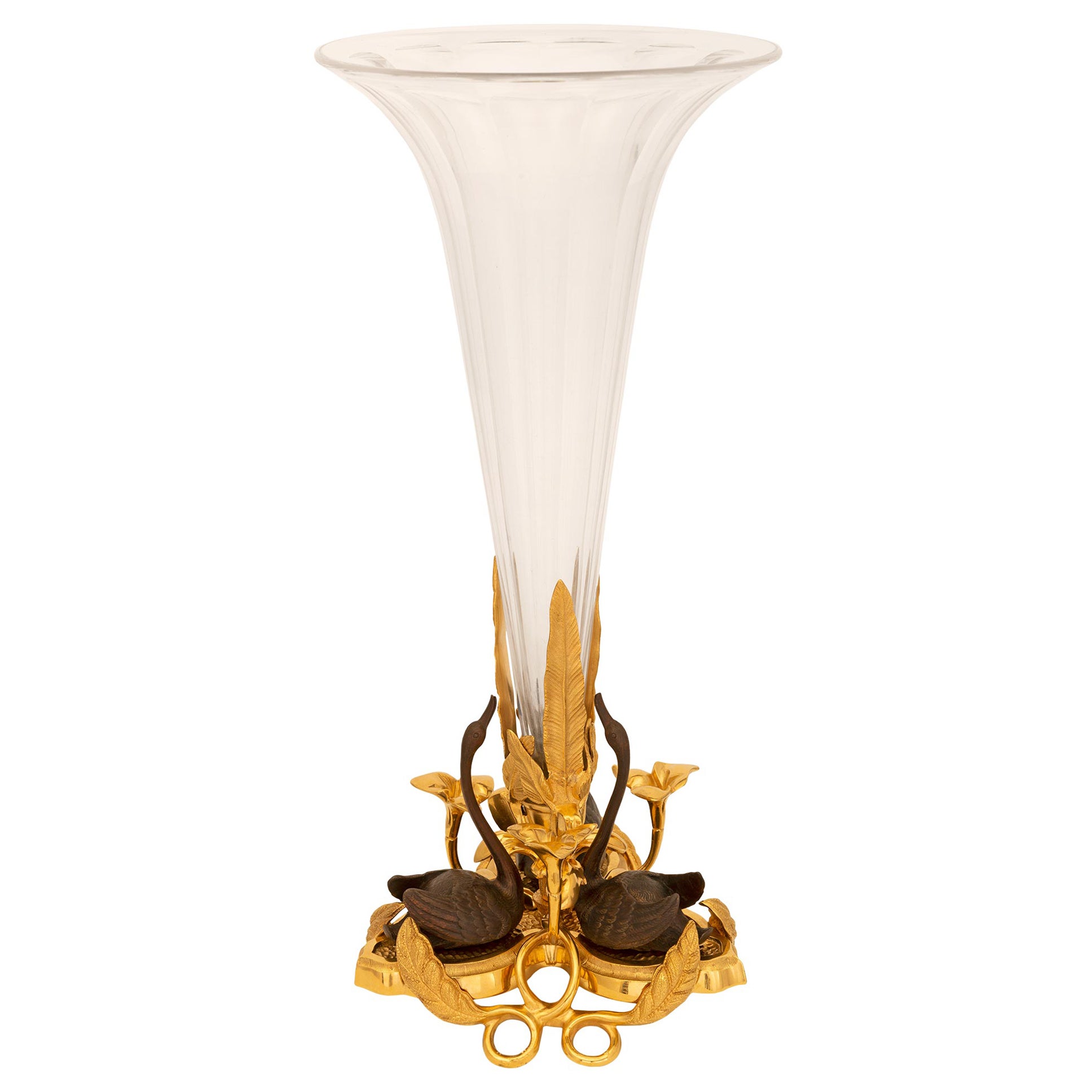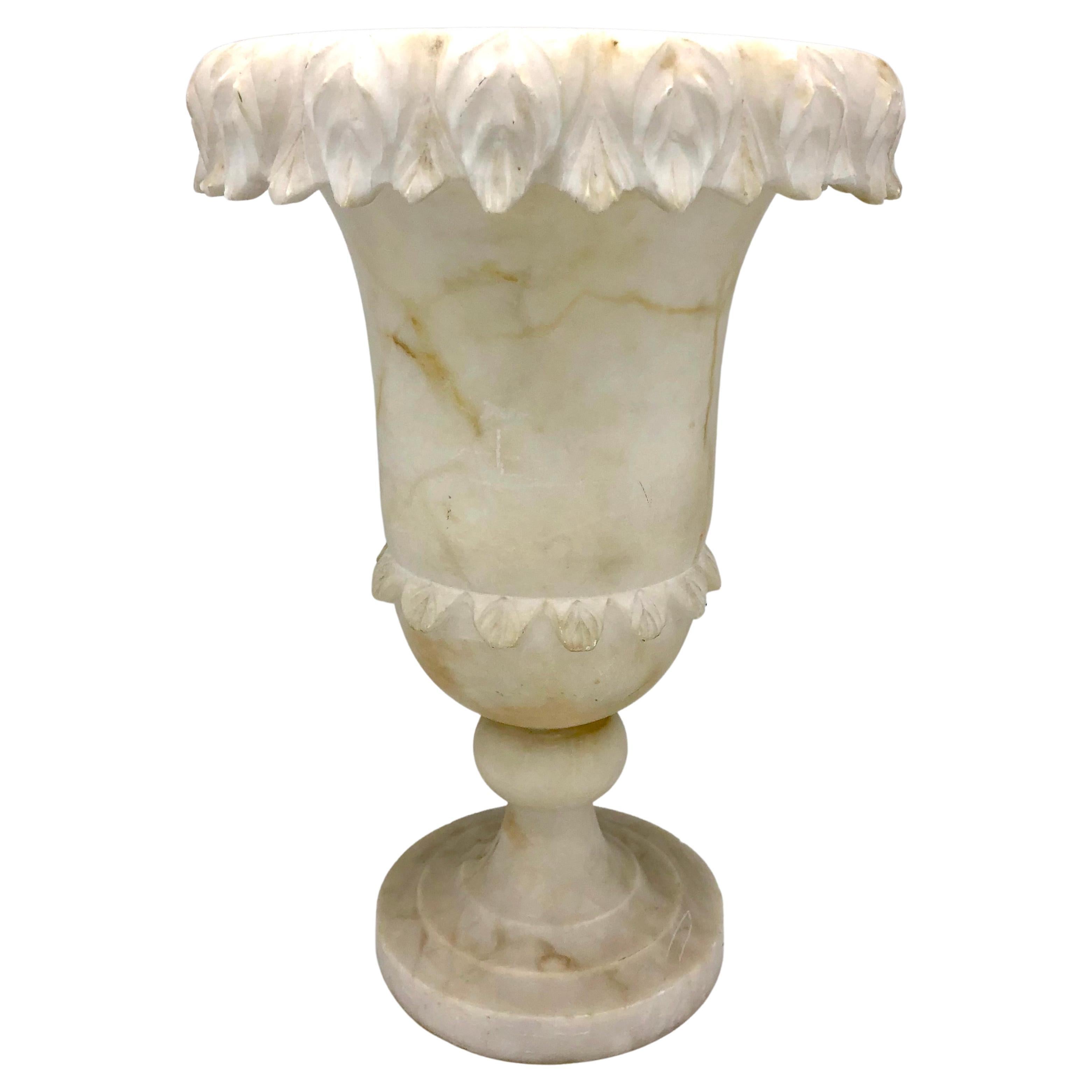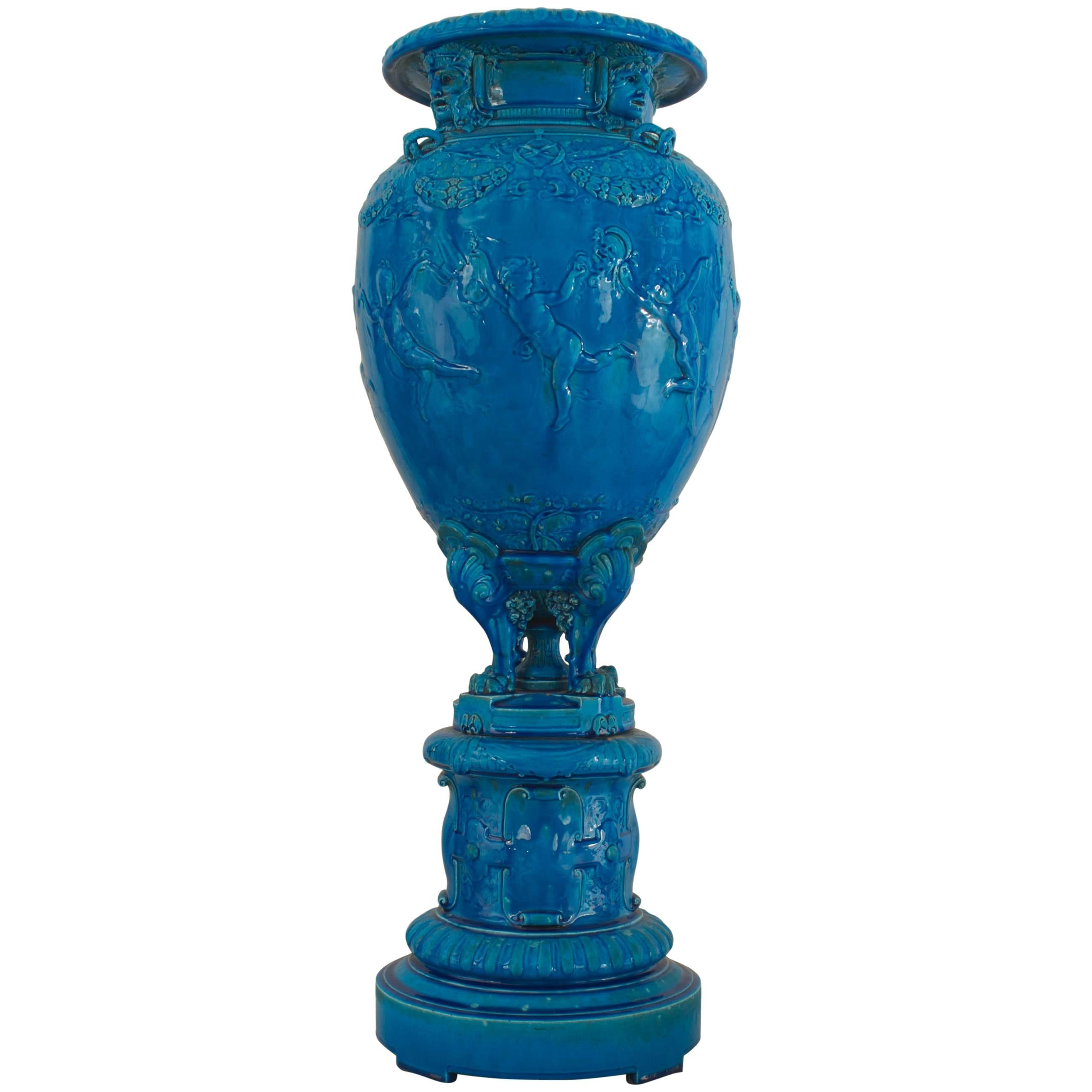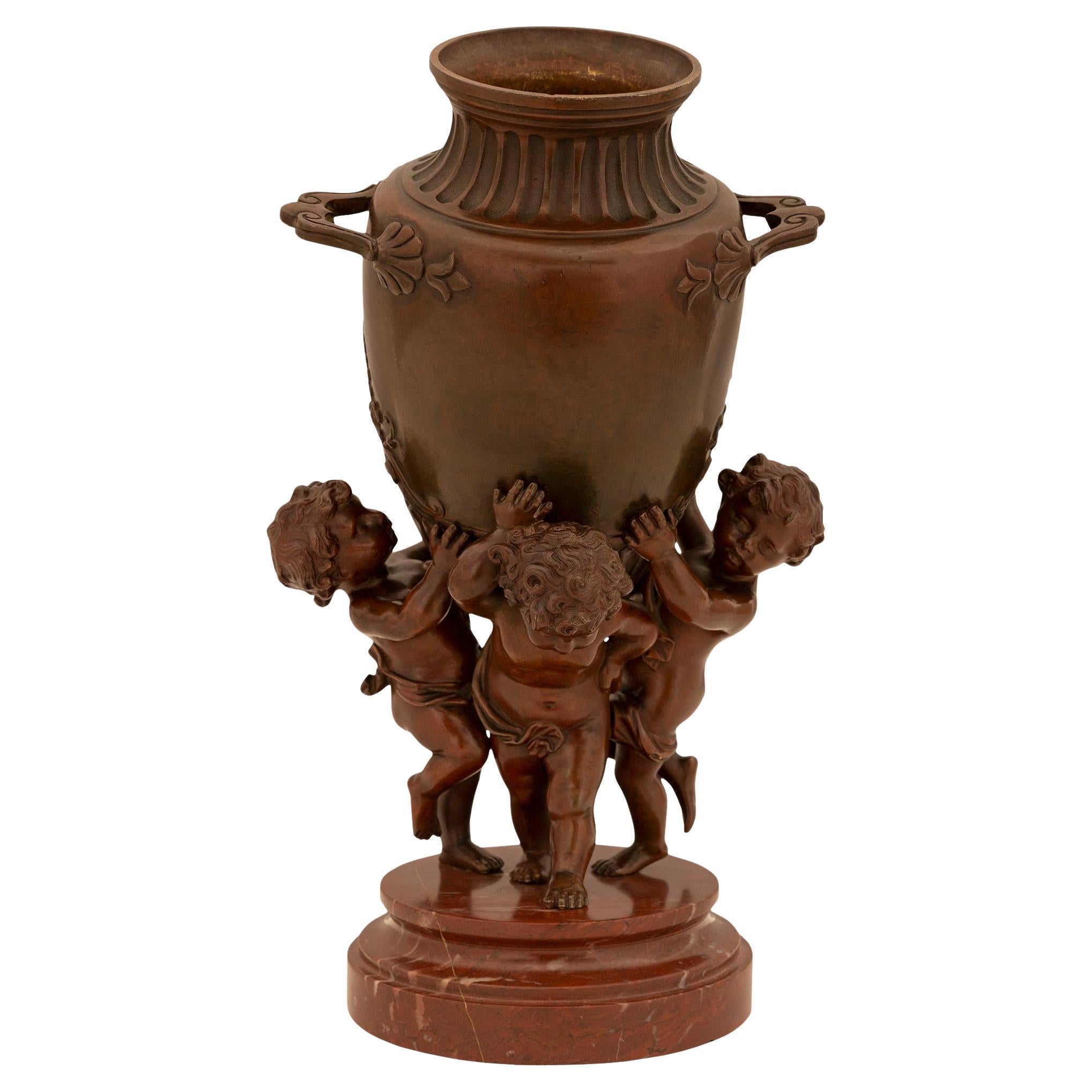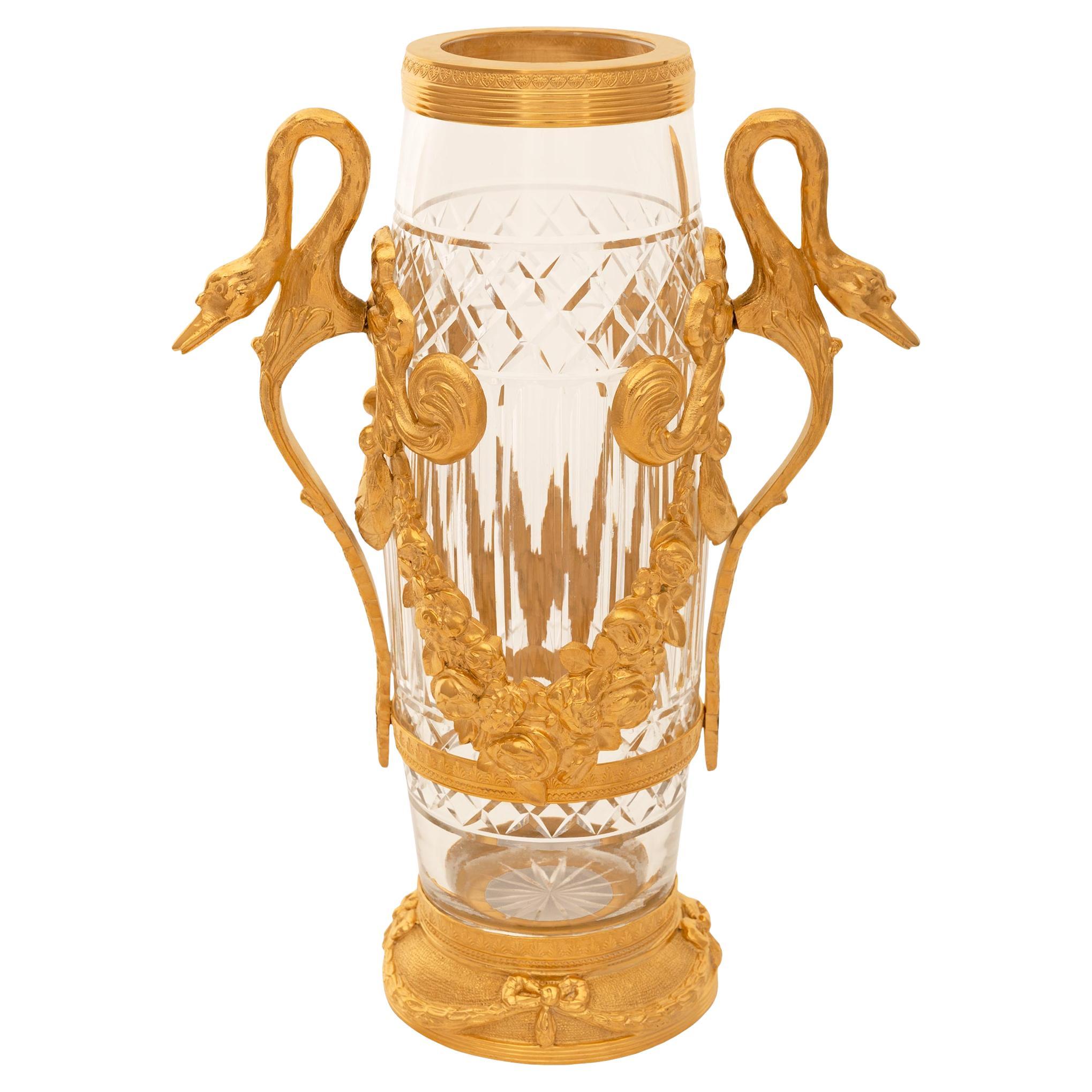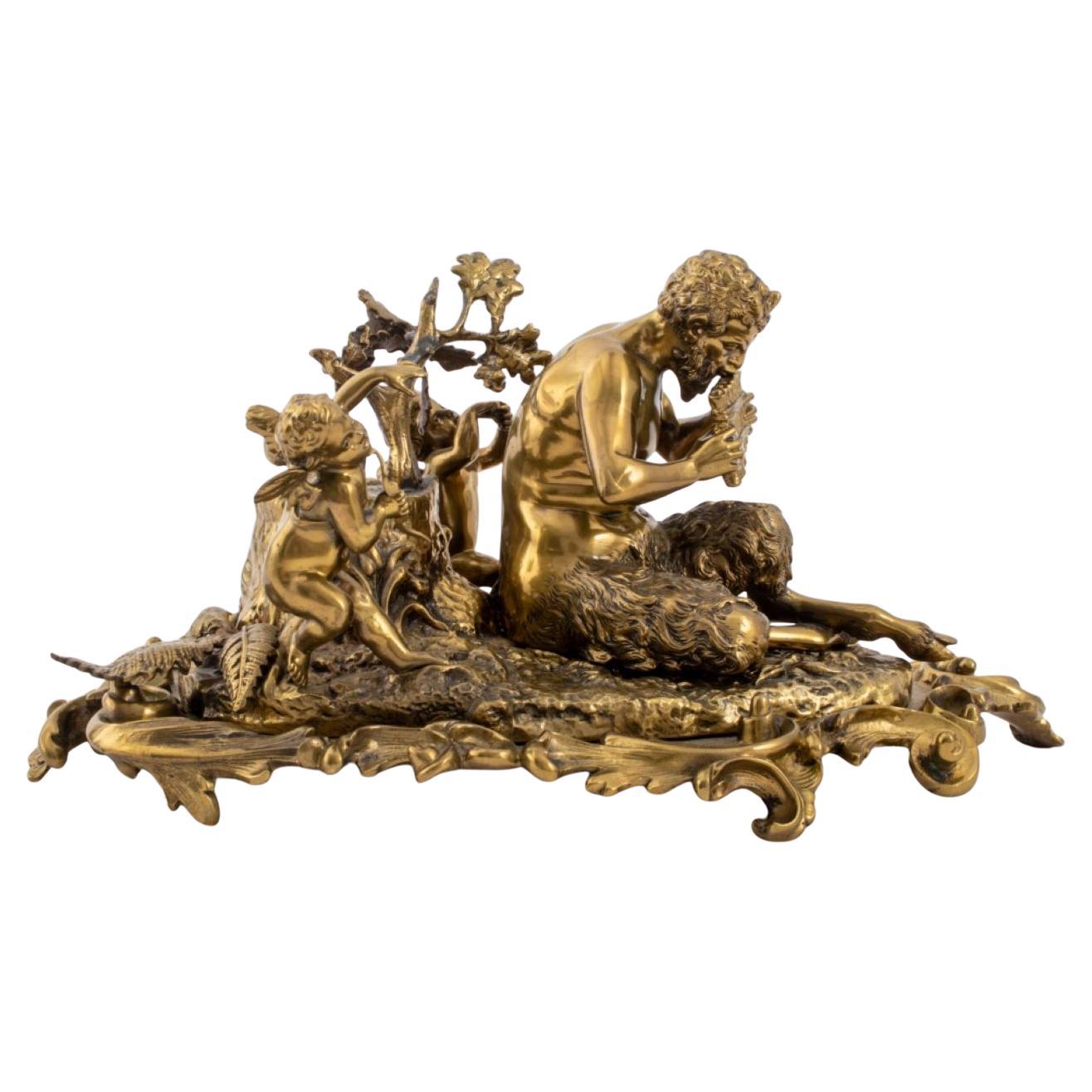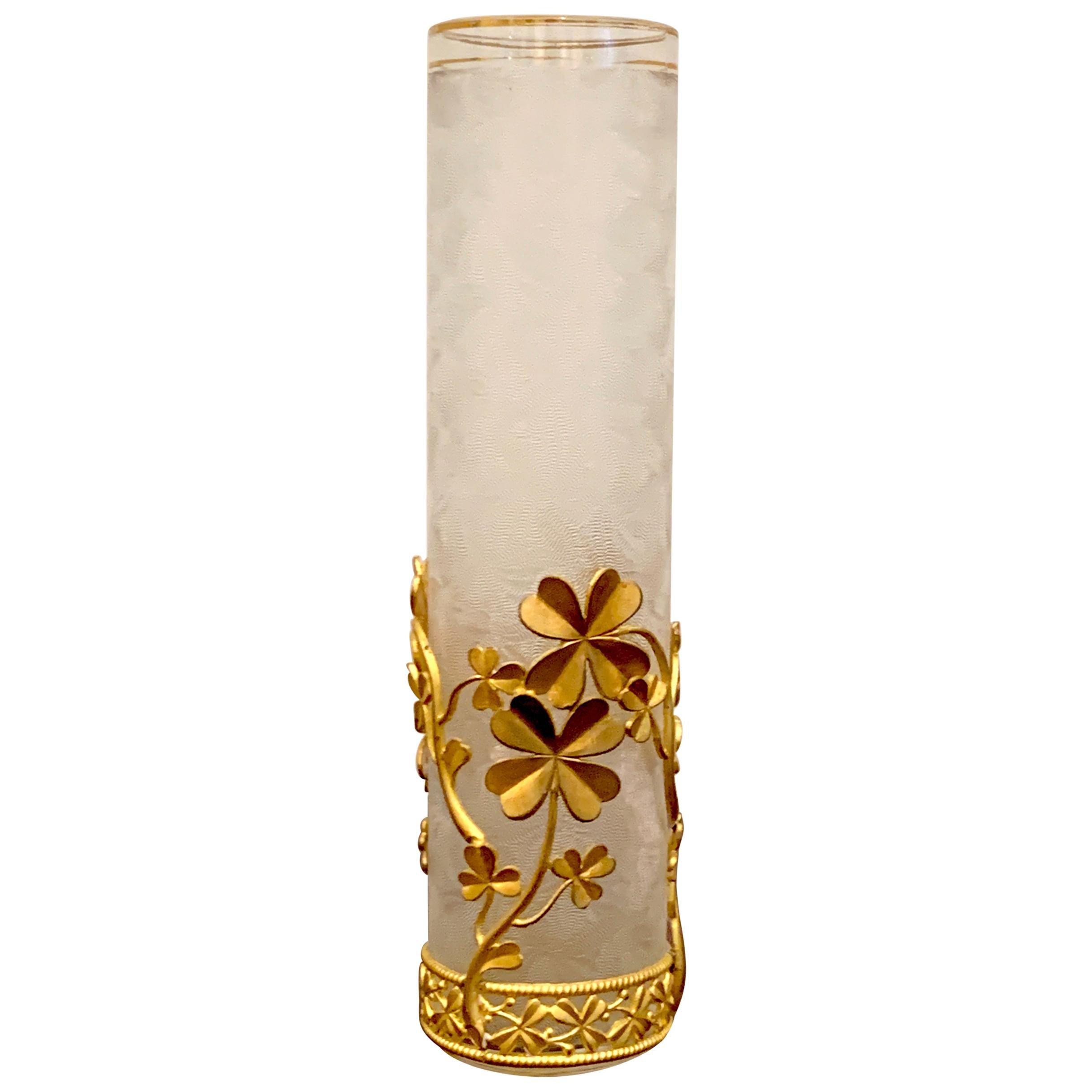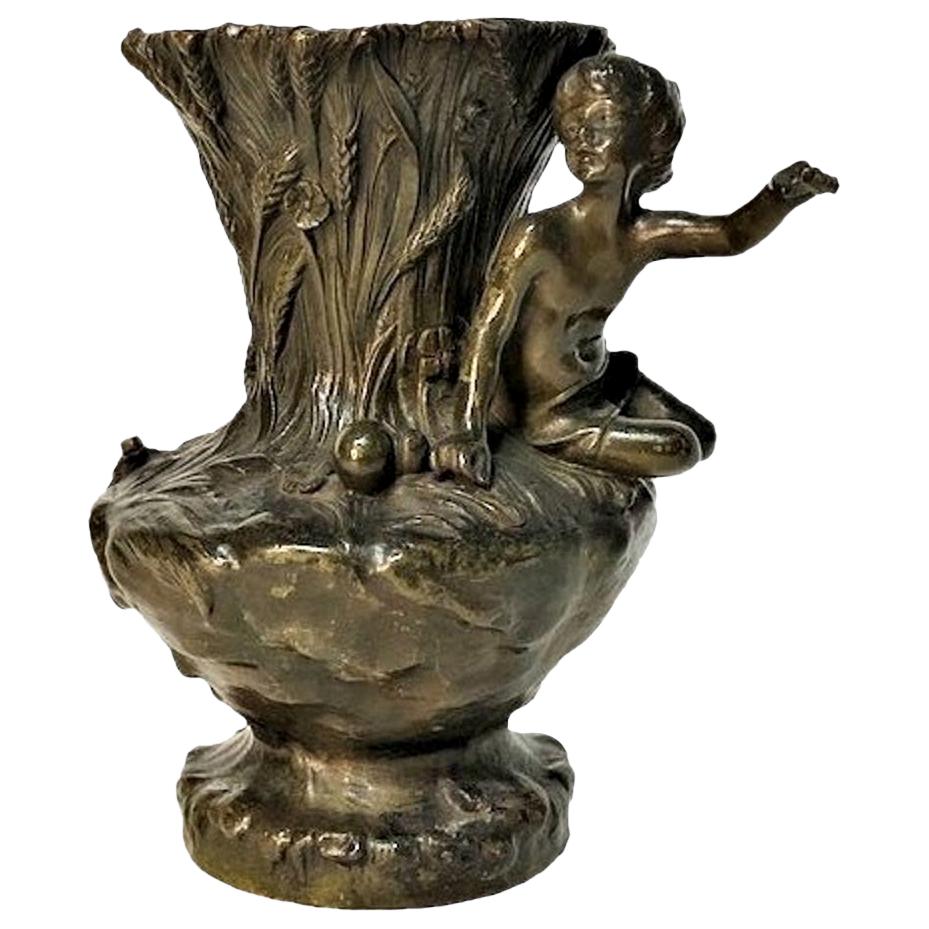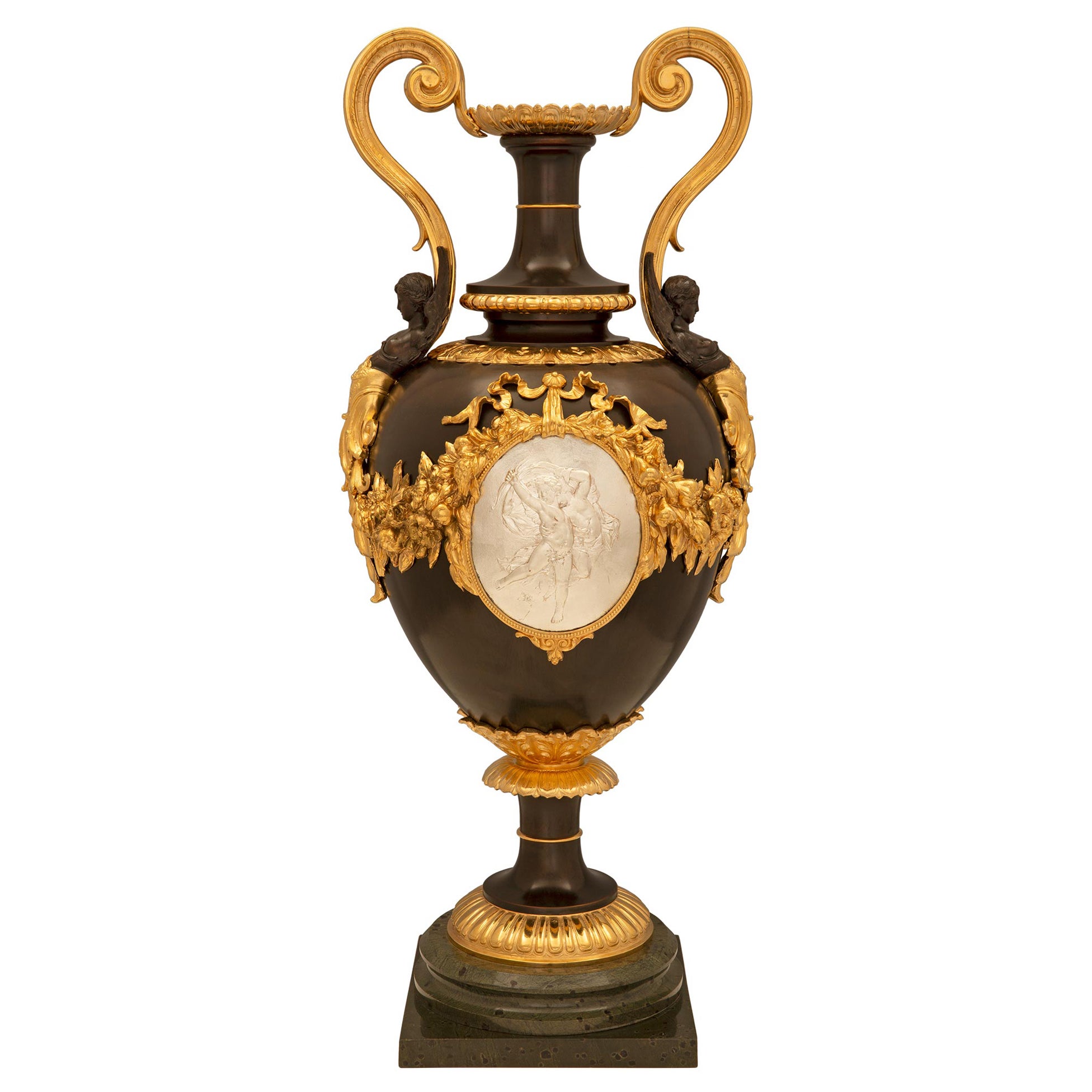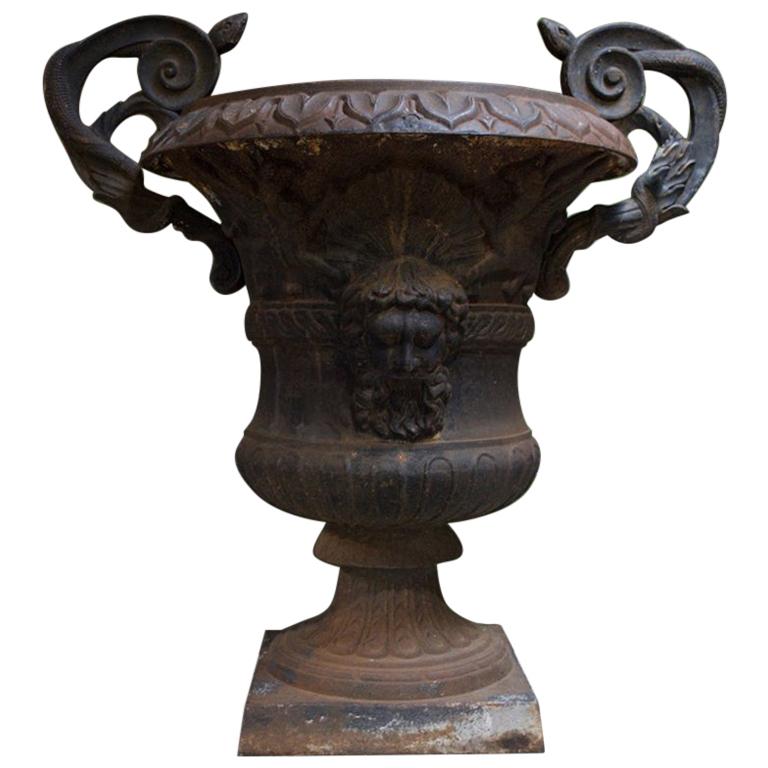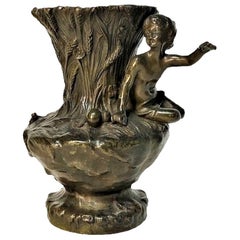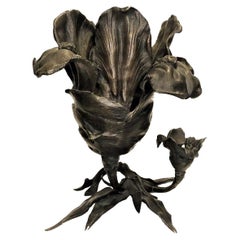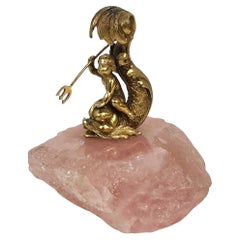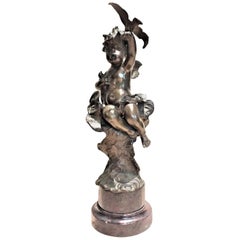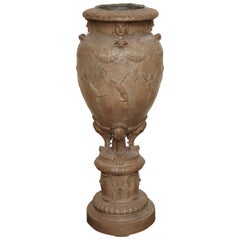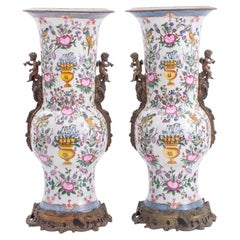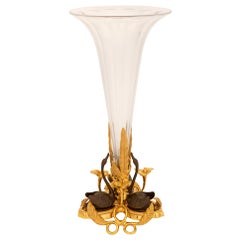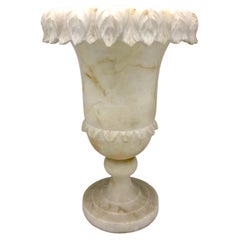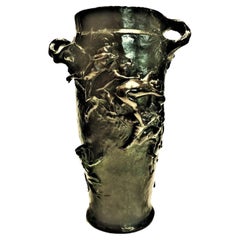
Gustave-Joseph Chéret, French Belle Époque Figural Bronze Vase, ca. 1885
View Similar Items
Want more images or videos?
Request additional images or videos from the seller
1 of 9
Gustave-Joseph Chéret, French Belle Époque Figural Bronze Vase, ca. 1885
About the Item
- Creator:Gustave-Joseph Chéret (Sculptor)
- Dimensions:Height: 14.5 in (36.83 cm)Diameter: 5.75 in (14.61 cm)
- Style:Belle Époque (Of the Period)
- Materials and Techniques:Bronze,Patinated
- Place of Origin:
- Period:
- Date of Manufacture:ca. 1885
- Condition:Wear consistent with age and use. We make our best effort to provide a fair and descriptive condition report. Please examine photos attentively, as they are an integral part of the description. Send us a message to request more details or discuss price.
- Seller Location:New York, NY
- Reference Number:1stDibs: LU2819332589932
About the Seller
5.0
Vetted Professional Seller
Every seller passes strict standards for authenticity and reliability
Established in 1993
1stDibs seller since 2017
80 sales on 1stDibs
Typical response time: 3 hours
Authenticity Guarantee
In the unlikely event there’s an issue with an item’s authenticity, contact us within 1 year for a full refund. DetailsMoney-Back Guarantee
If your item is not as described, is damaged in transit, or does not arrive, contact us within 7 days for a full refund. Details24-Hour Cancellation
You have a 24-hour grace period in which to reconsider your purchase, with no questions asked.Vetted Professional Sellers
Our world-class sellers must adhere to strict standards for service and quality, maintaining the integrity of our listings.Price-Match Guarantee
If you find that a seller listed the same item for a lower price elsewhere, we’ll match it.Trusted Global Delivery
Our best-in-class carrier network provides specialized shipping options worldwide, including custom delivery.More From This Seller
View AllFrench Beaux Arts, Patinated Bronze Figural Vase by A. Bofill, Ca. 1900
By Antoine Bofill
Located in New York, NY
Antoine Bofill (Spanish-French, 1875-1925) was a Spanish artist and member of the Animalier movement of the 19th century. Best known for his small, decorative bronze sculptures, Bofi...
Category
Antique Early 1900s French Beaux Arts Vases
Materials
Bronze
French Art Nouveau Patinated Bronze Sculptural Iris Vase, ca. 1900
Located in New York, NY
ABOUT IRIS
The iris is a special and mysterious flower. Not only because of its striking appearance, but also from an artistic and historical point of view. It is also like a work of art, as though created by Mother Nature. The unique leaves of this plant not only create wonderful shadow casts, but also look as if they were painted by hand. It's no wonder that iris acts as the muse for countless artists, and can be seen in many famous works of art.
The iris was first spotted in the time of Pharaoh Thutmose, in 1504 BC. He had the iris inscribed into the wall reliefs of a temple as a sign of his power, as well as decorating his sceptre with motifs of the flower. Since then, the iris has been a symbol of victory in Egypt. But the symbolism of the iris goes further than that. In Japan, the flower represents courage and is the symbol of the boys' festival. In Islamic cultures, the iris is a symbol of prosperity. In Europe, the flower was a popular weapon symbol in the Middle Ages and stood for chivalry. And in Christianity, the iris was seen as a symbol of the trinity because of its three-part flowers. With more than 300 varieties, the iris is now the most popular flower among growers and gardeners following the rose.
Countless artists use the iris in their works and the flower is present in all eras. You can see the flower on furniture, vases, jewelry, fabrics, sculptures, coats of arms and much more. Did you know that the iris is also called the sword lily? It's not a coincidence that it used to symbolize physical and emotional pain and suffering caused by a weapon. We also see the flower in religious art, where it's often associated with Mary and Jesus. The iris is also associated with the Greek goddess Iris, where the flower symbolizes reconciliation and divine messages. This is also reflected in many paintings.
Finally, the iris is also visible in Dutch and Flemish still-life paintings. This can be in a religious form, incorporated into an object or as a decorative flower.
In the Art Nouveau art movement, the iris (along with other plants, such as the birch) was often used as an expression of feminine beauty. With its almost otherworldly appearance, the iris is perfectly suited to the Art Nouveau aesthetic and is featured in many well-known works of art. The poet of that era, Hermann Hesse...
Category
Antique Early 1900s French Art Nouveau Planters, Cachepots and Jardinières
Materials
Bronze
French Belle Époque, Gilt Silver & Rose Quartz Sculptural Paperweight, ca. 1880
Located in New York, NY
French French Belle Époque
Sculptural Paperweight
Gilt Silver and Rose Quartz
ca. 1880s
DIMENSIONS
Height: 3-5/8 inches
Width: 3-3/4 inches ...
Category
Antique 1880s French Belle Époque Paperweights
Materials
Quartz, Silver
French Belle Époque, Patinated Bronze Desktop Sculptural Paperweight, 19 Century
Located in New York, NY
Signed illegibly original red marble base.
Dimensions: H: 8.25” x W: 3.25” x D: 4.25” Base diameter: 2.75”
This beautiful and delicate desktop dark chocolate-brown patinated br...
Category
Antique 1870s French Belle Époque Paperweights
Materials
Marble, Bronze
French Art Nouveau Iridescent Stoneware & Bronze Vase or Cachepot, ca. 1900s
Located in New York, NY
French Art Nouveau
Ocean Life Theme
Vase Cachepot
Iridescent Stoneware & Patinated Bronze Crab Appliqué
ca. 1900s
ABOUT
We present here a most unusual and utterly decorative Fren...
Category
Antique Early 1900s French Art Nouveau Vases
Materials
Stoneware
Antoine Bourdelles, French Belle Epoch, Sculptural Bronze Bookends, Ca. 1910
Located in New York, NY
French Belle Epoch
Antoine Bourdelle
Sculptural Pair of Bookends
Patinated Bronze
Edmond Etling & Cie Foundry, Paris
ca. 1910
DIMENSIONS
Height: 7.5 inches
Width: 3.33 inches
Depth: 3.33 inches
MARKINGS
Same markings are present on the plinths of both bookends:
Signed 'A. Bourdelle’.
Stamped ‘Edmond Etling & Cie Foundry, Paris’
ABOUT BOOKENDS
This exquisite pair of bookends, created by the renowned French sculptor Antoine Bourdelle, epitomizes the grace and emotional depth of the Belle Époque era. Each bookend is a remarkable sculpture in its own right, yet when placed together, they form an inseparable narrative composition, bound by a shared plot. One bookend captures the passionate embrace of Harlequin and his mistress, a tender yet intense moment frozen in time. The second bookend portrays Pierrot, lost in the anguish of jealousy, his expression and posture radiating sorrow and longing. Together, these two figurative sculptures create a dramatic scene, where the books they support become part of the stage set, acting as a barrier between the characters—much like a stage wall in a theatrical performance. The interplay of emotion and movement in this captivating sculptural pair makes it a true masterpiece, seamlessly blending art with functionality.
ABOUT SCULPTOR
Émile Antoine Bordelles (French, 1861 - 1929) was an influential and prolific French sculptor and teacher. He was a student of Auguste Rodin, a teacher of Giacometti and Henri Matisse, and an important figure in the Art Deco movement and the transition from the Beaux-Arts seyle to modern sculp[ture. His studio became the Musee Bourdelle, an art museum dedicated to his work, located at 18, rue Antoine Bourdelle, in the15th arondissement of Paris, France. His very well known for his use of quivering Romanesque forms in his depictions of mythological figures. One of his best known works Hercules the Archer (1909), was a commissioned sculpture for the financier Gabriel Thomas. Born Émile-Antoine Bourdelle on October 30, 1861 in Montauban, France, he learned woodworking as a youth from his father who was a cabinetmaker. While assisting his father during the workday, he studied drawing at the École des Beaux-Arts in Toulouse in the evening. Moving to Paris in 1885, the artist became an assistant to Auguste Rodin in 1893, Rodin’s influence is evident in many of Bourdelle’s early sculptures. By 1900, he had begun receiving commissions for a number of theaters and later taught classes at his studio to young artist such as Alberto Giacometti and Otto Gutfreund...
Category
Vintage 1910s French Belle Époque Desk Sets
Materials
Bronze
You May Also Like
Gustave-Joseph Chéret Terracotta Jardiniere Urn
By Gustave-Joseph Chéret
Located in New York, NY
Finely executed urn by sculptor Joseph Chéret (French, 1838-1894) inset with period aluminum liner for flowers. Epitomizes the mid-19th century Second Em...
Category
Antique Late 19th Century French Napoleon III Planters, Cachepots and Ja...
Materials
Terracotta
Porcelain & Gilt Bronze Belle Epoque Style Pair Vase
Located in Tarry Town, NY
Late 19th century Gilded age style glazed porcelain flaring decorative vases mounted with gilt bronze base and cherub-form handles. Each vase ...
Category
Antique Late 19th Century French Belle Époque Vases
Materials
Bronze
French 19th Century Belle Époque Period Bronze, Crystal, and Ormolu Vase
Located in West Palm Beach, FL
A charming and most elegant French 19th century Louis XVI st. Belle Époque period ormolu, patinated bronze, and Baccarat crystal vase. The beautiful vase is raised by a striking pier...
Category
Antique 19th Century French Belle Époque Vases
Materials
Crystal, Bronze, Ormolu
Antique Belle Époque French Alabaster Vase Garden Ornament
Located in Munich, DE
This elegant vase has been carved out of alabaster around in the 1880' in France.
Category
Antique 1880s French Belle Époque Planters and Jardinieres
Materials
Alabaster
French Victorian Turquoise Sevres Cheret Urn
By Manufacture Nationale de Sèvres, Gustave-Joseph Chéret
Located in Queens, NY
French Victorian monumental turquoise Sevres porcelain vase with cupids in relief on round pedestal base (signed JOSEPH CHERET)
Category
Antique 19th Century French Victorian Vases
Materials
Porcelain
French 19th century Belle Epoque Period Bronze and Marble urn
By Auguste Moreau
Located in West Palm Beach, FL
An exquisite French 19th century Belle Epoque Period Louis XVI st. red patinated Bronze and Rouge Griotte marble urn, attributed to Auguste Moreau. This most charming Bronze urn is r...
Category
Antique 19th Century French Belle Époque Urns
Materials
Marble, Bronze
Recently Viewed
View AllMore Ways To Browse
Malachite Italian Vase
Mccoy Vase
Mcm Glass Vase
Murano Cristalleria
Murano Fan Vase
Murano Glass Fan Vase
Murano Glass Tulip Vase
Murano Glass Vases With Spikes
Murano Tulip Vase
Murano Vase With Spikes
Noguchi Vase
Nymolle Stoneware Vase
Onesto Murano
Orrefors Tulip Vase
Paisley Vase
Paul Milet Sevres
Pezzato Vase
Pink Calla Lily
